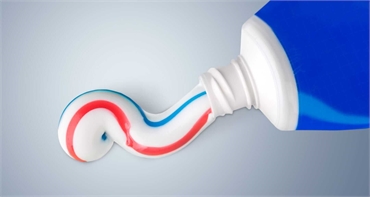What are the dangers of fluoride in toothpaste?
September 12, 2022

Back in the third decade of the 20th century, observations and extensive exhaustive studies revealed that a particular element in water was causing stains on the teeth of masses living in certain areas. Mottled surfaces of the teeth were less susceptible to caries even though they were discoloured. It was soon revealed that the mystery element is fluoride. It was in 1973 when the FDA approved fluoride as one of the 14 elements necessary for the normal growth and development of human beings.
Fluoride is a double-edged sword. If consumed less, it can make the tooth susceptible to caries. If consumed in excess, it can lead to fluorosis. Fluoride helps in making the teeth more resistant to caries. Right from the moment the first tooth erupts, fluoride consumption becomes necessary in the right dosage. Fluoride in diet should begin after 6 months of age. In a concentration of 0.3-0.6 ppm, dietary fluoride should be consumed for less than 1 mg. Most of the fluoride is absorbed in 30 minutes which occurs in the stomach and intestines. This absorbed fluoride is then transported to calcified tissues like teeth and bones.
Consumption of fluoride into the systemic conditions occurs routinely through salt and milk. Fluoride is added to salt by spraying concentrated solutions of sodium fluoride or potassium fluoride. Fluoride in milk is added in a concentration of approximately 2.5 mg to have a tooth surface resistant to caries. Fluoride can be applied on teeth either at home or professionally. Professional application of fluoride involves fluoride delivery through fluoride gels that are placed by the dental hygienist or dentist for 4 minutes per session. Each session is placed at certain intervals of months.
Home applications involves fluoride delivery through toothpastes and mouthwashes. Toothpastes contain fluoride in the form of sodium fluoride, monofluorophosphate, stannous fluoride and amine fluoride. Fluoride toothpastes are not recommended for children less than 4 years of age. Between 4 to 6 years of age, fluoride paste can be used once daily. Fluoride toothpaste can be used twice daily between 6 to 10 years of age and thrice daily after 10 years of age.
The safety tolerated dose of fluoride is between 80 to 301 mg between 2 to 14 years of age. 30 mg of fluoride is present in 50 g of toothpaste whereas 140 mg is present in a tube of 200 g. This means that a 6-year-old can eat 200 g of toothpaste and still be safe. Mouth rinses also contain fluoride. 0.05% of sodium fluoride can be used for daily use. A mouthwash containing 0.2% of sodium fluoride is for weekly use whereas 0.025% of sodium fluoride is ideal for the ones living in areas where fluoride content is high in water.
If the dosage guidelines for fluoride are not followed, it can lead to fluorosis if consumed in excess. For any individual, the safety tolerated dose is between 8-16 mg/kg of his or her body weight. Toxic doses are reached when fluoride levels are between 16-32 mg/kg of body weight. Lethal doses are touched when fluoride levels are at 32-64 mg/kg of body weight. Toxicity of fluoride can be acute or chronic. Acute toxicity occurs when too much fluoride is consumed in a short span. This can lead to nausea, vomiting, abdominal pain, diarrhoea, excess salivation, mucosal discharge, malaise, thready pulse, drop in blood pressure, respiratory depression and cardiac arrhythmia. Managing acute toxicity includes inducing vomiting, fluid replacement, consumption of milk and administration of 5-10% calcium gluconate.
Chronic toxicity of fluoride occurs when excess fluoride is consumed over a period of time. There are two types of chronic fluoride toxicity - skeletal fluorosis and dental fluorosis. Skeletal fluorosis affects the bones and joints. The movement of spine is restricted and painful in more severe cases. Neurological complications, deformities of legs, knees, hips can lead to a bedridden stage. The most severe stages of skeletal fluorosis may lead to destruction of muscle tissues, male infertility, loss of appetite, low IQ, depression and dyspepsia. When it comes to dental fluorosis, a "snow-cap" appearance of teeth can be seen. Teeth can becomes porous with demarcated opacities, discolorations and stains. Management of dental fluorosis involves teeth whitening, microabrasion, veneers, tooth-colored crowns and application of remineralizing toothpastes. The condition can be prevented by checking fluoridation levels of water regularly.
Fluoride in toothpaste is usually at a non-toxic level. It is essential for making the tooth resistant to caries and thus should be a part of oral hygiene routine regularly.

